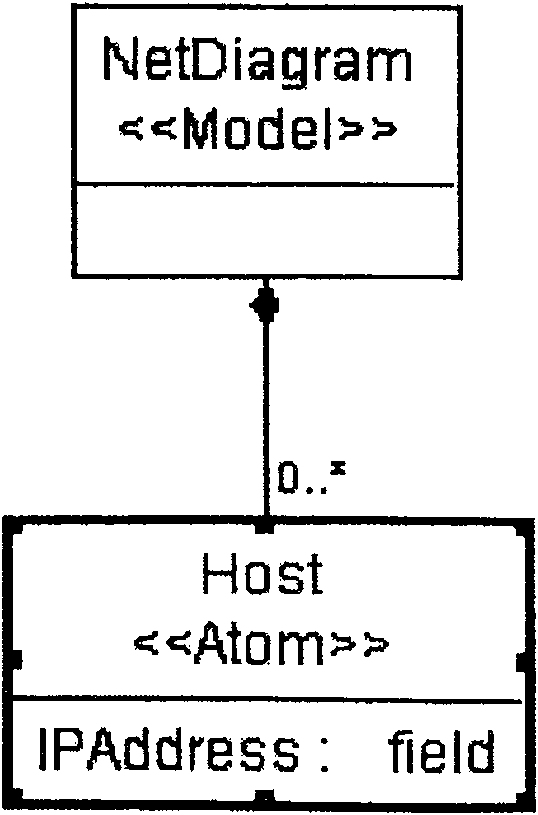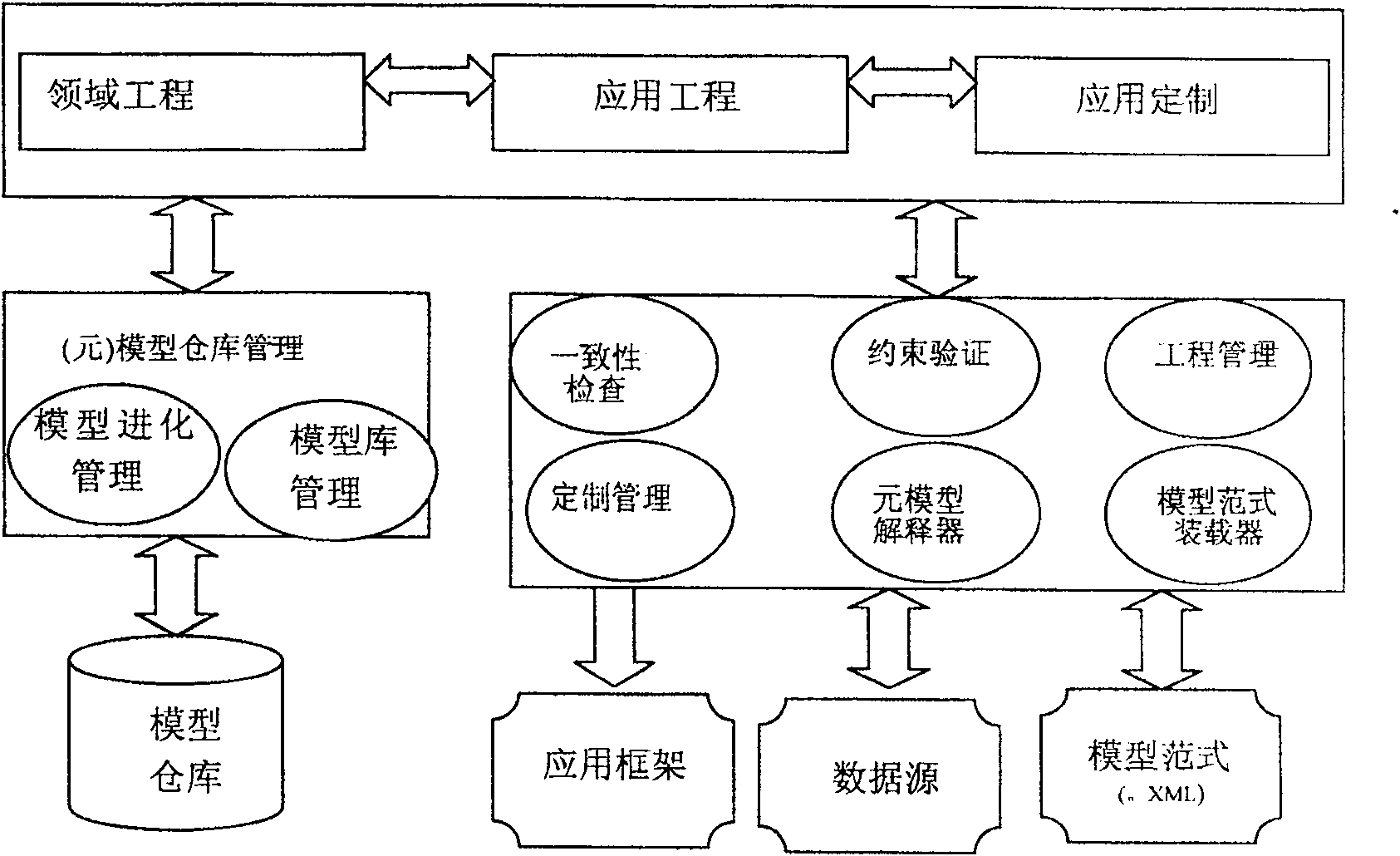Telecommunication region modeling tool based on unified modeling language and modeling method
A modeling language and domain technology, applied in electrical components, transmission systems, digital transmission systems, etc., can solve problems that are complex, have no practical tools, and cannot guarantee compliance with domain semantics and domain constraints
- Summary
- Abstract
- Description
- Claims
- Application Information
AI Technical Summary
Problems solved by technology
Method used
Image
Examples
Embodiment 1
[0074] Embodiment 1 Model-based network management mode
[0075] First, domain experts and modelers abstract domain knowledge and establish domain metamodels through domain tools. Including the establishment of domain concepts and domain relationships and domain constraints, as well as icons presented by model elements, views of the internal structure of complex model elements, and so on. Figure 4 A specific network meta-model is given.
[0076] Figure 4 The given metamodel shows that the router (Router) can contain ports, and the router is connected to the host (Host) and the network through the port. These network domain knowledge will constrain the modeling process. modeled as Figure 5 shown.
[0077] When modeling, links can be established between routers and hosts and between routers and networks. When you want to establish links between hosts and networks, the constraint validator of the domain model tool will perform verification to ensure that this does not con...
Embodiment 2
[0080] Embodiment 2 Requirements analysis and design based on modeling tools in this field
[0081] This domain modeling tool can also be used as a UML-based CASE tool in the requirements analysis and design stages of the software development process. Since the domain language can be established through meta-modeling, this tool can be applied to any field and is not limited to telecommunications field. After the domain language is established, the next work is the same as that of a general UML modeling tool. System static information modeling based on UML class diagram can be carried out.
PUM
 Login to View More
Login to View More Abstract
Description
Claims
Application Information
 Login to View More
Login to View More - R&D
- Intellectual Property
- Life Sciences
- Materials
- Tech Scout
- Unparalleled Data Quality
- Higher Quality Content
- 60% Fewer Hallucinations
Browse by: Latest US Patents, China's latest patents, Technical Efficacy Thesaurus, Application Domain, Technology Topic, Popular Technical Reports.
© 2025 PatSnap. All rights reserved.Legal|Privacy policy|Modern Slavery Act Transparency Statement|Sitemap|About US| Contact US: help@patsnap.com



